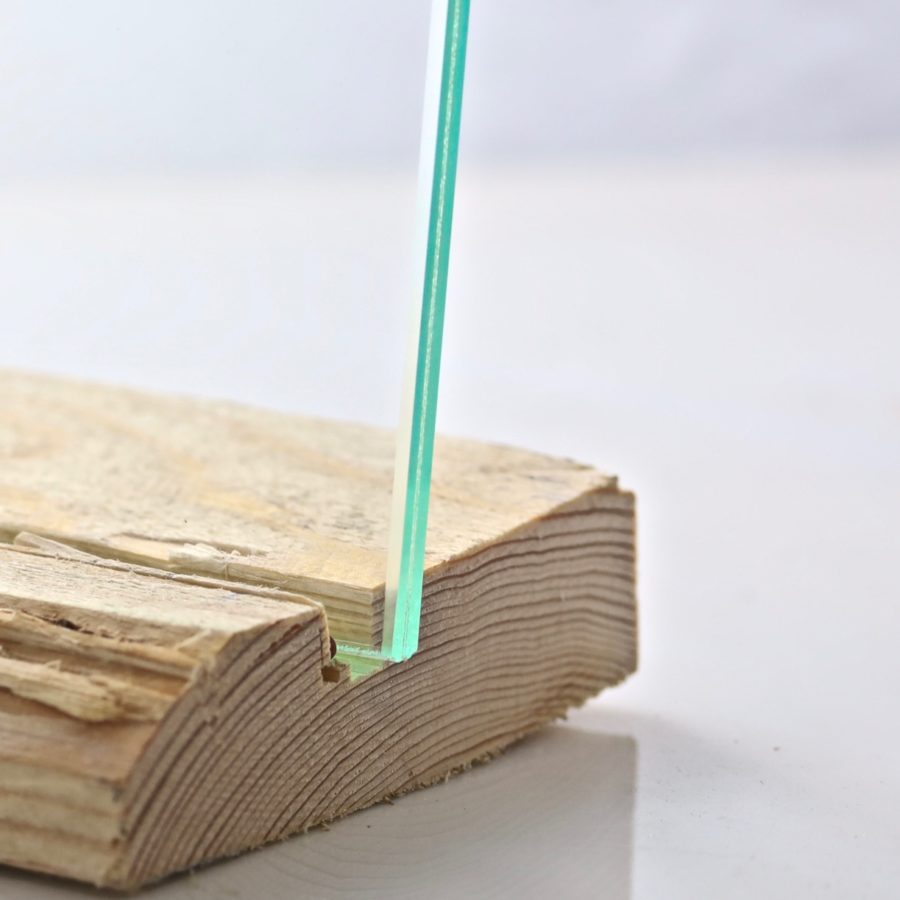Tempered laminated glass
Laminated glass (or tempered laminated glass) is made by laminating two or more glasses together with a PVB or EVA laminating film. If the glass breaks, the membranes still hold the two panes together, which means that laminated glass rarely causes an accident if it breaks. This is why laminated glass is classified as safety glass.
The laminating film is between the glasses. The maximum operating temperature for laminated glass is +80C.
Laminated glass is used for a wide range of interior applications, such as table and rail glass, safety glass for doors and windows, windscreens for vehicles and machinery.
If the edges of the glass are still visible after installation, we recommend that you also apply a polish to the glass from the edges menu. In this case, the sharp edges of the glass are ground clean and polished. ready for presentation. Edge grinding also slightly increases the bending resistance of the glass. If the edges of the glass are hidden inside the frame, edge grinding is not necessary. To add to the appearance, you can also choose to have the glass surface faceted at the edge or 45-degree faceted. When facet grinding glasses, if all corners of the glass are rounded with less than 11mm of angular curvature, the facet grinding is done in a straight line and does not follow the angular curvature. Otherwise, the facet is ground on a CNC machine to follow the edge line of the glass, including the rounding.
Glass can also be tempered before lamination – in this case the glass becomes tempered laminated glass. Tempered glass is also more resistant to temperature differences in different parts of the glass (200 kelvin difference inside the glass, maximum operating temperature 300C – untempered 40 kelvin). However, the maximum operating temperature for laminated glass is +80C. The edges of the tempered glass are always rough ground (even if ‘Cut with sharp edges only’ is selected).
Examples of the size of angular rotations: the radius, or R, is the size of the circle of which the angular rotation is a part. Examples of what corner spinning can be compared to:
The diameter of a long-playing LP is about 300mm, i.e. radius R=150mm
The diameter of the CD is 120mm, i.e. radius R=60mm
The diameter of a 2 euro coin is about 25mm, i.e. radius R=12.5mm
The diameter of a 10 ct coin is about 20mm, i.e. radius R=10mm
3mm rounding (R3) the rounding is just visible to the eye from the corner of the round, but the shape of the glass is not yet substantially changed
The 1mm rounding (R1) doesn’t look much like a rounded corner, but feeling it with your fingertip you can feel that the sharpness has just about disappeared.
Back-painted glass – we can paint the back of the glass in a colour of your choice. Backpainted glass is suitable for example as glass table tops, wall decorative glass, kitchen partitions, etc. You can create stunning decorative elements from the back-painted glasses. For the ground glass of a background painting, we always recommend to choose “Extra Clear Glass”, which has only a little bit of the natural green tint of the glass. This is when the colour rendering properties of the glass are at their best. However, extra clear glass is not completely colourless and it also “shades” the paint, so the colour seen through the glass is never the same as the same paint colour without it.
The black colour does not change much whether it is painted on normal or special clear glass.
Back-painted glass is for indoor use only and the painted side must always be hidden against another surface (table, wall) and protected from scratching.
The picture below compares the white painting on special clear and “normal” clear glass:
Below is an example of a round special clear glass, painted in Violet 4003:
Drilling a hole in the glass – you can also order holes to be drilled in the glass to your desired location. There are certain regularities in where holes can be drilled in the glass. For example, each glass thickness has its own minimum distances, the distance between the edge of a hole and, for example, the edge of the glass, the corner of the glass or another hole. These distances are larger in tempered glass than in untempered glass and the distances increase with the thickness of the glass. There is also a minimum hole diameter depending on the glass thickness.
Our calculator always automatically checks that these minimum distances are met and that the hole is not too small for the glass thickness.
The holes are always rough-edged, i.e. the holes are supposed to go “hidden”.
6-40mm holes are usually drilled with diamond drills and holes over 40mm are either drilled or machined with CNC machines.
There is no upper limit to the size of the hole, we can machine almost any size hole in the glass
The holes can also be flush with the edges, making the so-called. half e.g. for cable penetrations, etc. or fireplace glass against a round fireplace
The holes cannot be too close together, but the holes can partially overlap (min 1/3 part) – this will give you longer gaps. (Hole spacers may be machined straight if production possibilities so require)
If possible, always try to use the same hole size (cheaper)
Tempered laminated glass: click on a product below to access the price calculator
Showing the single result
